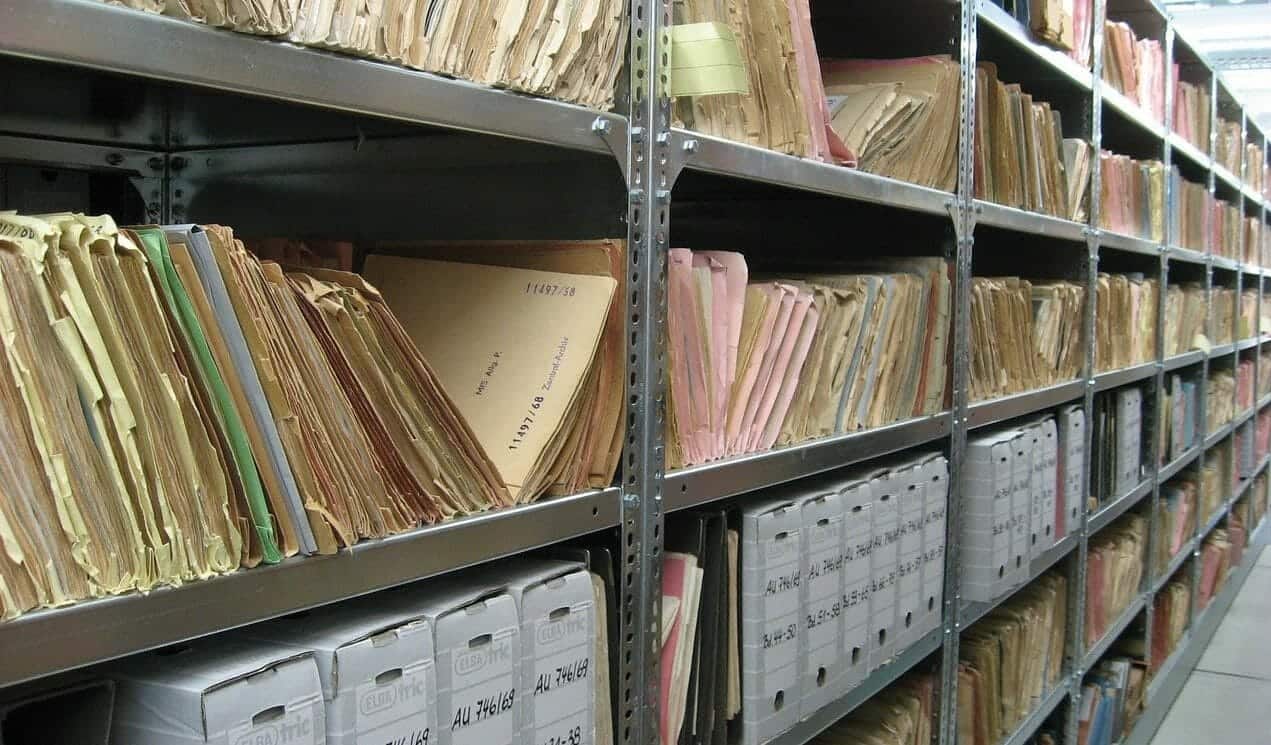│by Pauli Kettunen, Gale Ambassador at the University of Helsinki│
Is the picture above what comes to mind when you think of an archive? Do you believe that, to find any useful information, you must spend weeks between the shelves without seeing daylight?! If so, I have good news for you – Gale Primary Sources has updated archival research to the twenty first century! You no longer have to plough through library catalogues or rummage in endless boxes to find material relevant to your research – you can do so in seconds by running a text search, just like when googling.
How do I take advantage of this miracle, I hear you say? Just find the Gale Primary Sources platform via your University Library catalogue and start browsing! If you don’t find Gale Primary Sources immediately, ask a librarian or the Gale Ambassador at your university. I promise – the Gale Primary Sources archive is at the tip of your fingertips! Depending on your University Library’s collection, you will have access to different content sets of millions of pages of primary sources, and hundreds of years of history – all available easily 24 hours a day, whenever and wherever you want to use them.
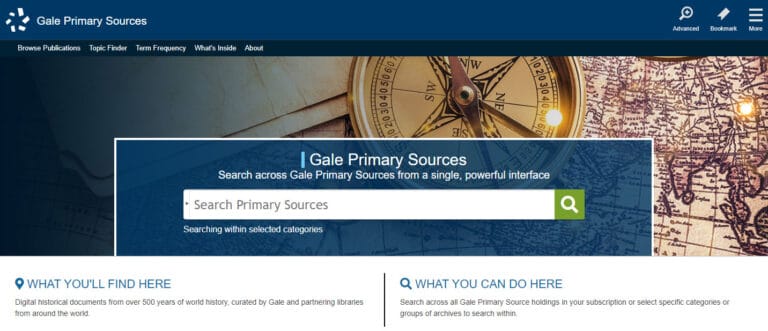
Primary Sources as a tool of critical analysis
When using primary sources, it is useful to remember the five W’s: Who, When, Where, What, and Why? These questions will help you think critically about primary source material. In Gale Primary Sources, you can easily search for material by a specific writer (Who?), and filter by the date of publication or production (When?). You can then address the other questions – What, Where and Why? – via your search queries. Very soon you will start to find sources relevant to your topic, essay or assignment, and begin to critically analyse the sources in light of these questions.
Gain extra credit with original analysis
Even if you’re basing an essay on secondary source literature, you might like to add a little flare or “spice” to your argument with contemporary accounts of your topic. For example, when I was writing about Finnish emigration to the United States during the nineteenth century, I used mainly academic papers and books. But in addition to those, I referenced relevant articles from Nineteenth Century US Newspapers which impressed my tutor and earned me credit for using and interpreting original, primary source material. I also wrote a post for The Gale Review which summarised my findings, which you can read here. (Just imagine some more academic secondary sources analysed alongside this, and you have my coursework!)
By using primary sources, you will be able to develop your own interpretations and arguments. If you are interested in early modern literature, Eighteenth Century Collections Online has plenty of novels for you to read and interpret, rather than relying on scholars’ summaries and interpretations of the text. Or perhaps you could use the Gale Digital Scholar Lab and analyse their language with powerful Digital Humanities tools. My co-ambassador last year, Rebekka, wrote a brilliant blog post about the Gale Digital Scholar Lab – check that out if you are interested in seeing some of the fascinating new ways that a large corpus of documents can be computationally analysed, opening up the possibility of exciting new conclusions.
Primary sources are relevant to many subject disciplines
Primary sources are obviously important to the study of History, but they can also be utilised in many different fields. For example, many of my fellow Gale Ambassadors study English. Textual primary sources are a great resource through which to study the evolution of language, especially when you can search the whole document for specific uses of language, as well as evolving views, reception and interpretations. For example, check out my fellow ambassador Tania Chakraborti’s great piece ‘What is a monster? Tracking the evolution and reception of monstrosity in literature from the nineteenth century to modern day’. Alternatively, one could study how newspaper layouts have changed over the years. The images below are front pages from 1645, 1880, and 2000. What kind of changes do you notice?
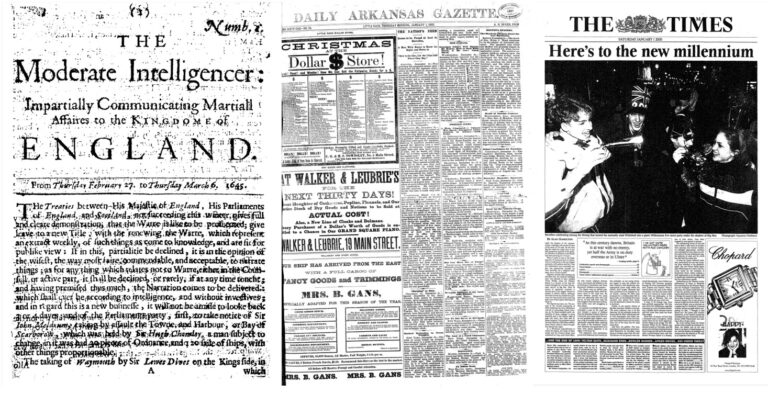
Centre “Multiple Classified Advertisements.” Arkansas Gazette, 1 Jan. 1880. Nineteenth Century U.S. Newspapers, https://link.gale.com/apps/doc/GT3009601212/GDCS?u=uhelsink&sid=GDCS&xid=adebd4a9
Right Hamilton, Alan. “Here’s to the new millennium.” Times, 1 Jan. 2000, p. 1. The Times Digital Archive, https://link.gale.com/apps/doc/IF0502306284/GDCS?u=uhelsink&sid=GDCS&xid=e1d1fc24
“Fake news” is not new
Due to social media, people are able spread lies and conspiracy theories faster than ever before, but people still managed to do so before the advent of the internet. It is possible to find a surprising number of hits for “fake news” from the late 1800s in Gale Primary Sources, like in this article from the Rocky Mountain News in 1897:
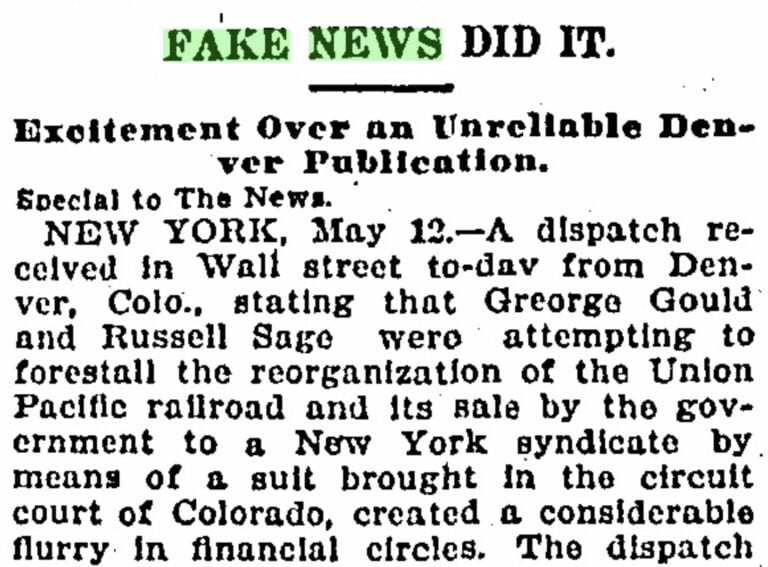
In fact the issue of “fake news” has been around long before the current surge in use of the term, albeit described differently. By using the Term Frequency tool (visualisation below), it can also be seen that nineteenth-century journalists favoured describing the issue as erroneous reports, as can be seen from this excerpt of the Portland Oregonian from 1898:
!["Just from Finland." Portland Oregonian [Oregon Territory], 2 Aug. 1898, p. 8. Nineteenth Century U.S. Newspapers](https://review.gale.com/wp-content/uploads/2019/11/Just-from-Finland.-Portland-Oregonian-Oregon-Territory-2-Aug.-1898-p.-8.-768x480.jpg)
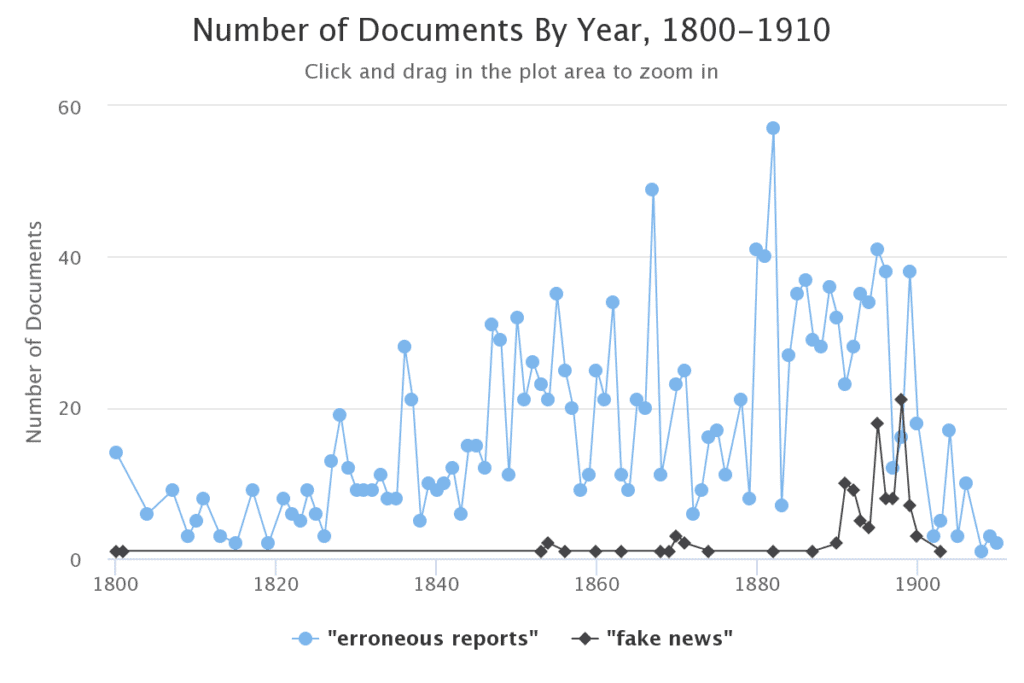
Even as far back as 1646 the The Kingdomes Weekly Intelligencer (a title in 17th and 18th Century Burney Newspapers Collection) mentioned that they published for the purposes of providing people overseas with the right facts, not alternative ones. Trying to twist the public understanding of events and the reasons behind them in a particular way has always been an important part of power struggles and media reporting. This makes me wonder what kinds of methods people in ancient civilisations used to counter the spread of misinformation. Unfortunately, not even Gale can provide us with the answer to that question – not yet at least!
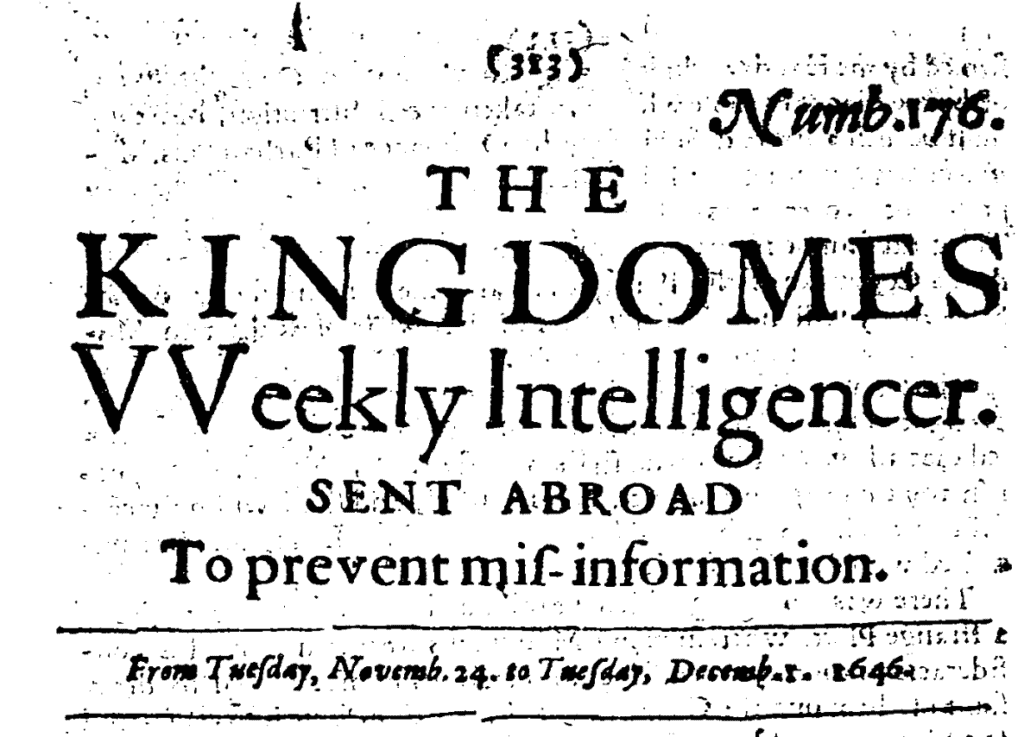
I’ve found discovering gems like these while browsing through the archives truly inspiring; it has often helped to motivate me and increase my passion for my subject. Hopefully this blog post has shown you how fascinating archives can be, as well as showcasing their potential to embellish your university essays with impressive content that may just boost your grades! And if at any point you need a breather from a complex research task, you can even find amusing cartoons like those below!

Right “Redrawing the MAP in Europe.” Economist, 12 Apr. 2008, p. 41+. The Economist Historical Archive, https://link.gale.com/apps/doc/GP4100374520/GDCS?u=uhelsink&sid=GDCS&xid=765dbf5a
Blog post cover image citation: By Chris Stermitz, on Pixabay: https://pixabay.com/photos/files-ddr-archive-1633406/

